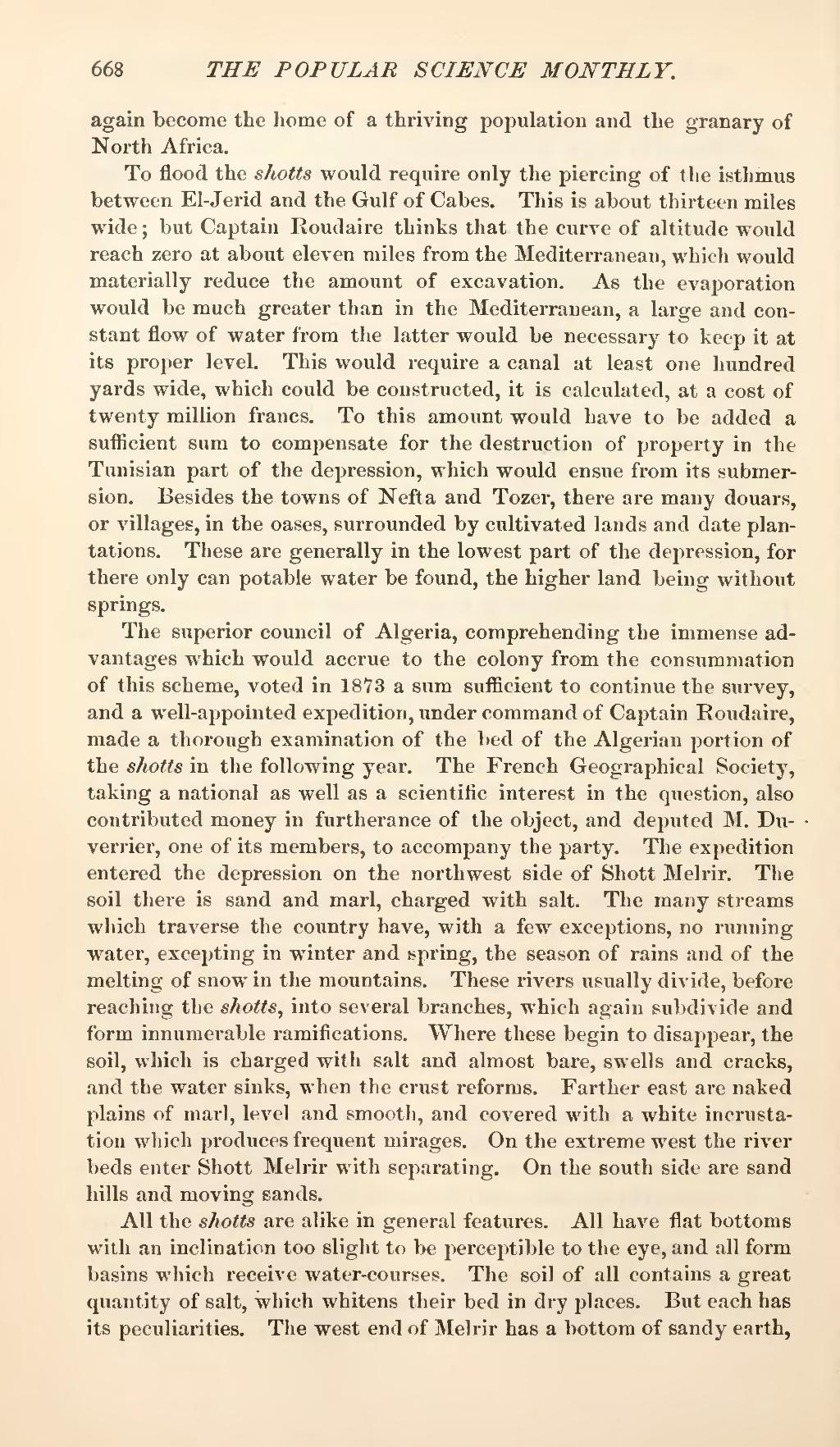again become the home of a thriving population and the granary of North Africa.
To flood the shotts would require only the piercing of the isthmus between El-Jerid and the Gulf of Cabes. This is about thirteen miles wide; but Captain Roudaire thinks that the curve of altitude would reach zero at about eleven miles from the Mediterranean, which would materially reduce the amount of excavation. As the evaporation would be much greater than in the Mediterranean, a large and constant flow of water from the latter would be necessary to keep it at its proper level. This would require a canal at least one hundred yards wide, which could be constructed, it is calculated, at a cost of twenty million francs. To this amount would have to be added a sufficient sum to compensate for the destruction of property in the Tunisian part of the depression, which would ensue from its submersion. Besides the towns of Nefta and Tozer, there are many douars, or villages, in the oases, surrounded by cultivated lands and date plantations. These are generally in the lowest part of the depression, for there only can potable water be found, the higher land being without springs.
The superior council of Algeria, comprehending the immense advantages which would accrue to the colony from the consummation of this scheme, voted in 1873 a sum sufficient to continue the survey, and a well-appointed expedition, under command of Captain Roudaire, made a thorough examination of the bed of the Algerian portion of the shotts in the following year. The French Geographical Society, taking a national as well as a scientific interest in the question, also contributed money in furtherance of the object, and deputed M. Duverrier, one of its members, to accompany the party. The expedition entered the depression on the northwest side of Shott Melrir. The soil there is sand and marl, charged with salt. The many streams which traverse the country have, with a few exceptions, no running water, excepting in winter and spring, the season of rains and of the melting of snow in the mountains. These rivers usually divide, before reaching the shotts, into several branches, which again subdivide and form innumerable ramifications. Where these begin to disappear, the soil, which is charged with salt and almost bare, swells and cracks, and the water sinks, when the crust reforms. Farther east are naked plains of marl, level and smooth, and covered with a white incrustation which produces frequent mirages. On the extreme west the river beds enter Shott Melrir with separating. On the south side are sand hills and moving sands.
All the shotts are alike in general features. All have flat bottoms with an inclination too slight to be perceptible to the eye, and all form basins which receive water-courses. The soil of all contains a great quantity of salt, which whitens their bed in dry places. But each has its peculiarities. The west end of Melrir has a bottom of sandy earth,
